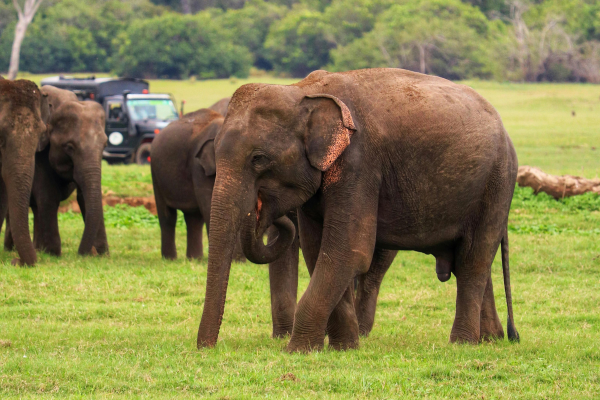Elephants in Sri Lanka: Conservation and Tourism – By Malsha – eLanka

Sri Lanka, known as the “Pearl of the Indian Ocean,” is home to a rich tapestry of biodiversity, including the iconic Sri Lankan elephant. As a subspecies of the Asian elephant, Elephas maximus maximus, these majestic creatures are deeply intertwined with the country’s culture, religion, and ecosystems. However, balancing conservation efforts with their role in tourism presents a complex challenge.
The Cultural and Ecological Importance of Elephants
Elephants hold a revered place in Sri Lanka’s cultural heritage. They feature prominently in religious processions, such as the Esala Perahera in Kandy, where elaborately adorned elephants carry sacred relics. These gentle giants also play a critical role in maintaining the ecological balance, helping to disperse seeds and create pathways in dense forests, benefiting other wildlife.
Conservation Challenges
The Sri Lankan elephant population has faced significant threats over the years. Habitat loss due to agricultural expansion, deforestation, and urbanization has fragmented their natural ranges. This often leads to human-elephant conflicts, where elephants encroach on farmland, resulting in crop destruction and sometimes loss of life on both sides.
Poaching, although less prevalent than in some other regions, remains a concern, especially for male elephants with tusks, known locally as “tuskers.”
Despite these challenges, Sri Lanka has taken steps to protect its elephant population. Protected areas like Udawalawe, Minneriya, and Yala National Parks serve as sanctuaries where elephants can roam freely. Conservation organizations also work tirelessly to raise awareness and implement solutions, such as electric fencing and community education programs, to mitigate human-elephant conflict.
Elephants in Tourism
Elephants are a significant draw for tourism in Sri Lanka. Thousands of visitors flock to national parks each year to witness herds of elephants in their natural habitat, particularly during the annual Elephant Gathering at Minneriya National Park. This event, occurring during the dry season, is one of the largest congregations of wild Asian elephants in the world.
However, the tourism industry has also been criticized for practices that exploit elephants. Traditional elephant rides and performances often involve unethical treatment, leading to calls for more responsible and sustainable tourism practices. Increasingly, tourists are opting for ethical elephant experiences, such as observing them in the wild or visiting sanctuaries that prioritize their welfare.
Conservation and Tourism: Finding the Balance
To ensure the survival of Sri Lanka’s elephants, a delicate balance must be struck between conservation and tourism. Responsible tourism practices can provide vital funding for conservation efforts while promoting awareness of the challenges these animals face.
Initiatives such as community-based eco-tourism allow local communities to benefit financially from protecting elephants, reducing the incentive for harmful activities like poaching or retaliatory killings. Meanwhile, strict regulations and guidelines for elephant-related tourism can ensure that these activities are both ethical and sustainable.
The Path Forward
Sri Lanka’s elephants are a national treasure, symbolizing the country’s natural wealth and cultural identity. Protecting these majestic creatures requires a multi-faceted approach, combining conservation science, community engagement, and sustainable tourism practices.
By fostering a deeper understanding of the importance of elephants and supporting ethical tourism, visitors and locals alike can play a part in ensuring that these gentle giants continue to thrive in Sri Lanka’s lush landscapes for generations to come.
This balance between conservation and tourism not only secures the future of elephants but also reinforces Sri Lanka’s reputation as a leading destination for eco-conscious travelers.





















